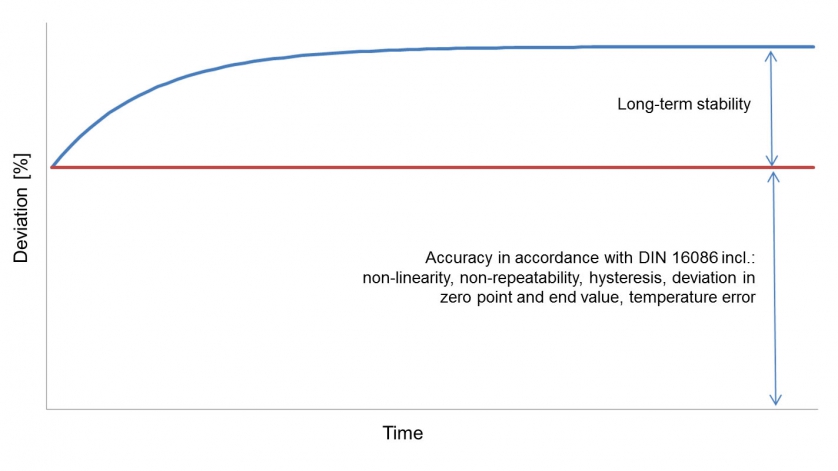
A value for long-term stability or long-term drift is usually given in the data sheets for pressure sensors. However, very few users are familiar with the exact meaning and, above all, the distinction between the two terms.
Which standards are the two terms defined in?
Long-term drift, and the required tests connected with it, are specified in the EN 61298 standard. The long-term stability is defined in DIN 16086.
How do long-term drift and long-term stability differ?
With long-term drift, in accordance with EN 61298-2, chapter 7.2, a pressure value of 90 % of the measuring span must be maintained for 30 days. Before and after this test, the signal at zero pressure and at measuring span pressure are measured. The maximum deviation between both measurements (before and after the test) corresponds to the long-term drift in accordance with EN 61298-2. The long-term stability is specified in the DIN 16086 standard as the maximum change in the zero signal and output span signal of a pressure measuring instrument under reference conditions within one year. Theoretically, a sensor must therefore be stored for one year at reference conditions in order to obtain a value for long-term stability.
For validation generally the sensors are stored at increased temperatures, which shortens the test duration. The basic difference is therefore: the long-term drift is determined under applied pressure, the long-term stability is determined without any applied pressure, but purely through the ageing of the pressure transmitter’s components. How does the output signal evolve over several months or even years? The error does not develop in a linear way over the years, but saturates after a certain time (exponential progression). A specification of the time until when this saturation state is reached is dependent on the respective application and cannot be generally defined. An individual and very costly validation corresponding to the application would be necessary to determine the signal change.


Hello wika.com administrator, Your posts are always well organized and easy to understand.